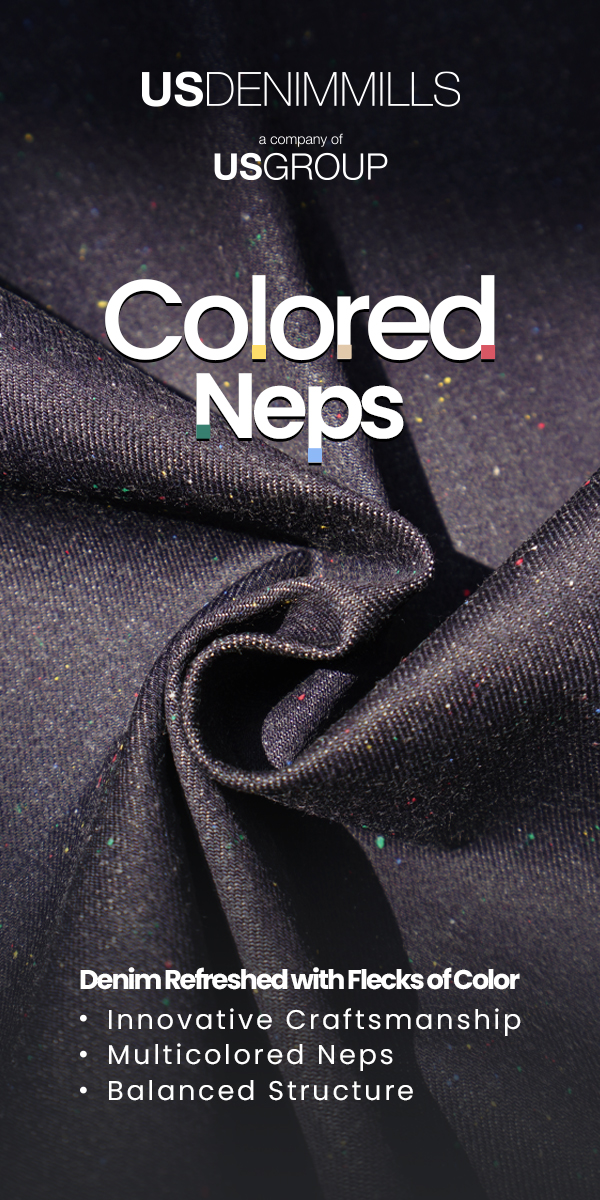Mexico must invest in advanced technology

Jeanologia’s José Luis García says the denim industry in Mexico has good prospects for growth as western brands scale down sourcing in Asia. To make the most of the opportunity, he argues that manufacturers must embrace new technology and make garments in the most efficient and most sustainable way possible.
It is in the interest of the whole denim industry to take notice when textile finishing technology provider Jeanologia explains the vision for the future and the mission it has set itself. In describing its aims, it talks about helping to make denim and the entire textile sector more ethical, more efficient and more sustainable. José Luis Garcia, who works in the Jeanologia Brainbox team in Mexico, calls it “detoxing garment finishing” and insists that these efforts are certain to make an impression on denim manufacturers. By his calculations, the company’s technologies play a part in finishing the fabric for 35% of all the denim garments being produced in the world today.
He argues that the technology provider’s presence in Mexico is important; denim output is poised to grow there as brands and manufacturers move a proportion of their production away from Asia. The Spanish company has a team in Mexico comprising technicians, design professionals and sales people. It runs a showroom there to show off its own denim collections and provides locally based denim designers with opportunities to try out new ideas, as well as offering formal training to customer organisations. This work of training new-generation technicians and spreading Jeanologia’s know-how throughout the denim value chain is the role that the Brainbox team fulfils.
Closer to consumers
“Everybody knows that we are in a period of great global change,” Mr García explains. “We’ve come through the covid-19 pandemic, which has left a clear mark on this industry because it has made the globalisation that we had all grown used to much more complex now. Asia seemed to be growing stronger and stronger all the time in terms of its share of denim production. Well, now we see things going the other way.”
He says there is evidence already of production moving closer to consumer markets. For producers everywhere, the biggest and most attractive consumer market is the US, making Mexico what he calls “a natural market” for producing denim and finished garments in large volumes for shipment across the border. He calculates that between 5% and 15% of denim production in Asia has now moved to the Americas and, according to information that Jeanologia has amassed, this could increase to between 40% and 50% of Asia’s total production.
This has coincided, according to the company’s assessment, with an increase in sales of denim in the US and companies there have realised that supply chain complexity and delays on delivery times mean they can no longer depend as much on the Asian market. “This means diversifying production,” Mr García says, “and that includes bringing more production to Mexico.”
Demand for sustainable products
At the same time, he says brands selling to consumers in the US want products that they can present as being more sustainable. “These brands believe they can find this in Mexico,” he continues. “Made in Mexico is synonymous with better-quality products. There is also the know-how here of how to create the finishes brands are looking for and manufacturers can produce large or small quantities of the products brands want and ship them quickly.” Bringing all this together, he argues that Mexican denim manufacturers can best capitalise on their delivery-time advantage by investing in technology such as Jeanologia’s; the clear suggestion is that new technology will mean greater speed and agility, as well as greater environmental responsibility.
“Mexico is attractive,” he says. “Discussions are under way to bring, in the course of the next two or three years, production programmes to manufacturers in Mexico that have put these sustainable technologies in place.”
Rush for fabric
He confirms that an increase in denim production in Mexico (he thinks it could go up by 3.5% compared to pre-pandemic levels and for exports to increase by 17%) will be good news. But it will have an important consequence: there will be more demand for denim fabric than suppliers can keep up with. “It’s already becoming difficult to source fabric,” José Luis Garcia insists, “and this is linked to the crisis we are living through at the moment, with the war in Ukraine and the whole international situation. Costs have gone up, including the cost of cotton, of chemicals and of energy.”
Advanced technology’s potential for generating cost savings is all the more important in this context, he claims. Cost savings and environmental improvements go hand in hand. He cites a figure of 18.2 million cubic-metres of water per year as the volume that existing installations of Jeanologia’s technology are helping to “save from contamination”, pointing not just to environmental progress, but to an important reduction in water treatment costs, too. Labour-saving benefits are also important, he points out, explaining that there is a labour shortage in the denim industry in Mexico. “Finding people who want to work in textiles is becoming complicated,” he says. “Everyone knows textiles work is hard.” Technology will allow producers to cope with this, to save costs and become more competitive.
Digital path
The technology that is on offer from Jeanologia represents a set of tools that can help manufacturers embrace change and move forward along what he calls “the digital path”, create better products and become more efficient. These tools include the company’s Light Sensitive Fabric Test technology for helping jeans manufacturers choose fabric well, its eDesigner digital design package and its production technology.
On the first of these, Mr García emphasises the importance of fabric quality and fabric choice. The fabric that a brand or manufacturer chooses to use will help determine the characteristics that the finished jeans will have, he explains. Choose the fabric well and it is possible to apply thousands of different finishes well, but without good fabric knowledge, this is much more difficult to execute.
Light Sensitive Fabric Test is a system for analysing denim; it works by applying different laser treatments, different types of tears and different washes to a single piece of fabric to see which ones look best. Carrying this task out effectively will allow manufacturers to see right away what the best finishing options are for each piece of material. This also works in the other direction: if there is a need for a specific finish, the technology will allow knowledgeable producers to pinpoint quickly and easily the best fabric to use.
Next, they can then use eDesigner to check that a particular finish will look right before putting it into production. This software application can create digital samples and entire digital collections for manufacturers to share with customers at the earliest possible stage, saving time and the materials that are required to make sample products. “It’s still very common these days to start a new collection by making physical samples,” he continues. “Designers think up the styles they want and production teams create examples of them for their design colleagues to examine, give feedback on and, eventually, make their selections. All of this can take two or three months and, of all the samples that arrive during that time, maybe only 10% will go into production. Creating digital samples saves a lot of time and allows you to concentrate on the items that you really are going to produce.”
And when it comes to production, bearing in mind the need and desire to prioritise sustainable processes, Jeanologia suggests using the range of technologies it has grouped together in a set-up it calls ‘Engineering Centre’. This includes the laser technologies that will provide the motifs and marks that the design team wants to see, plus ozone-based eco-wash solutions under its G2 label. Another component part of the Engineering Centre operational model is the company’s SmartBox washing technology, with which it offers manufacturers important savings in water, chemicals and energy. “The water saving can be as much 70%,” Mr García says, “and there is no pumice stone and no permanganate involved. All of this means that you are working cleanly from the outset.”
The final piece of technology he talks about is EIM (Environmental Impact Measurement), a software tool that measures the environmental footprint of an individual garment, taking into account its consumption of water, energy and chemicals and its impact on workers’ health. “You can use it to measure each step,” he explains, “and see the difference any change in your process would make.” He can list the names of dozens of brands that are already using EIM to measure sustainability improvements in their supply chains and to communicate them to consumers.
Mexican companies are already investing in technology solutions like these to prepare themselves for growth and to put themselves in a position to meet demands from denim brands for a more sustainable product. Across the Americas, there are more than 400 Jeanologia machines already in operation, out of a total of 4,000 globally, helping manufacturers produce millions of pairs of jeans a month. “We are not asking companies in this part of the world to help us start something new,” he explains. “We are asking them to join us as we continue what we have already begun.
Jeanologia’s José Luis García speaking at the Intermoda event in Guadalajara, Mexico, this July 2022.
Photo: Intermoda













